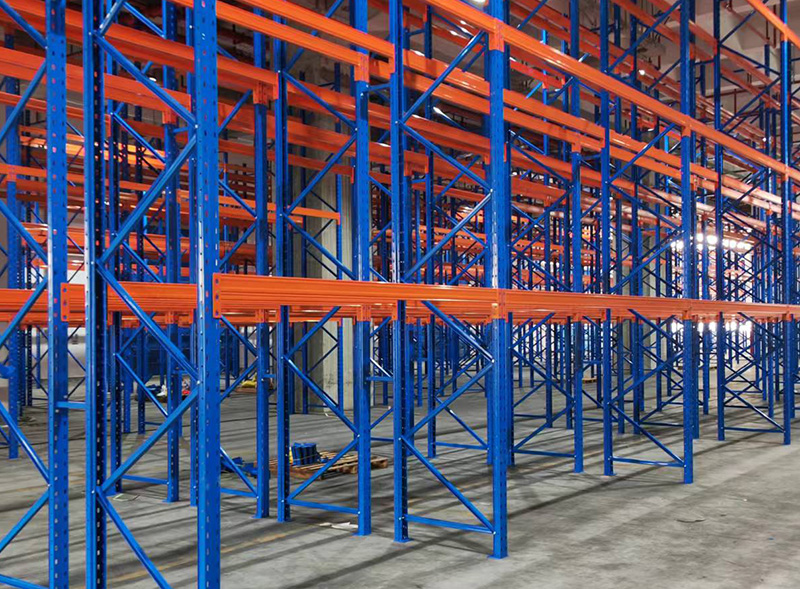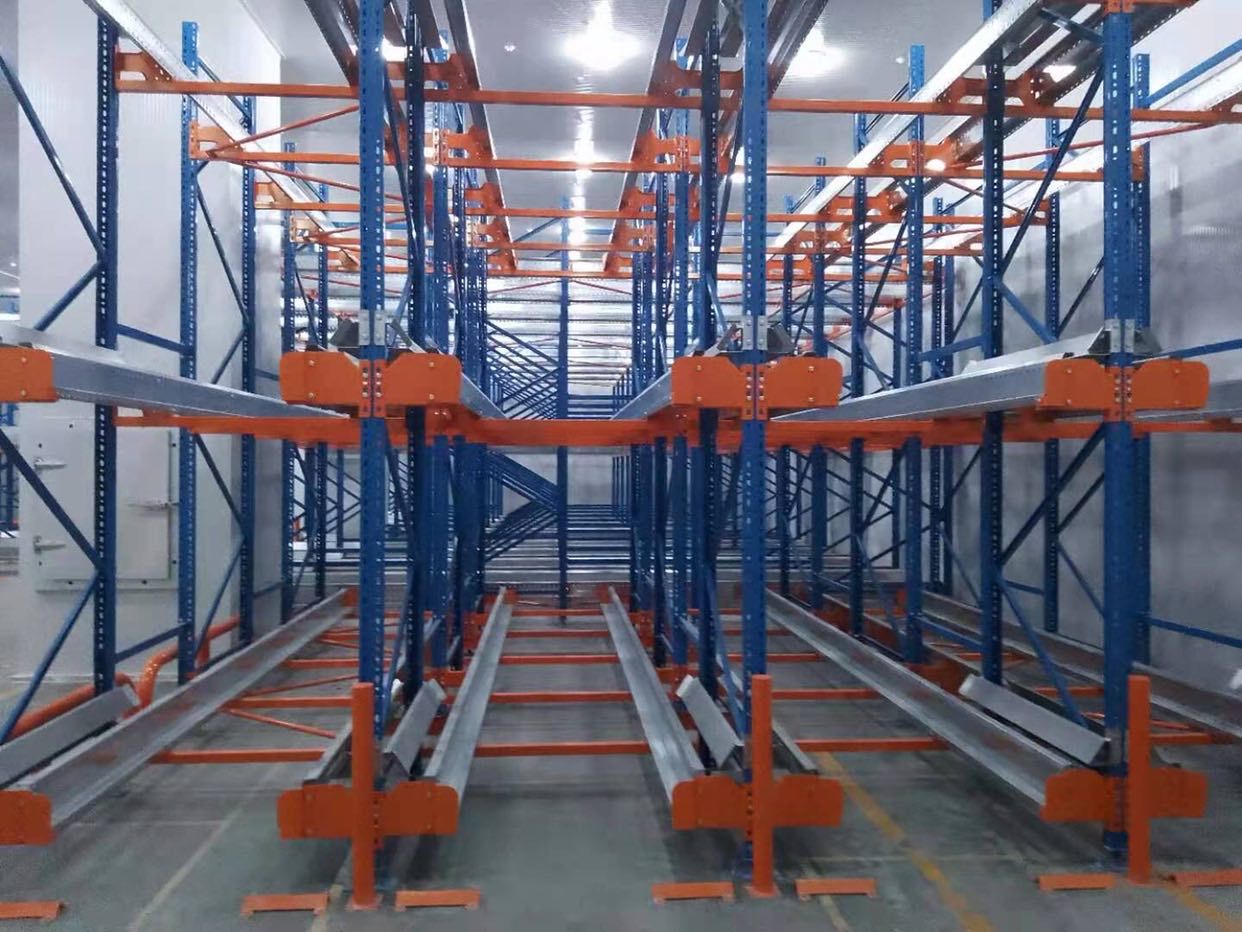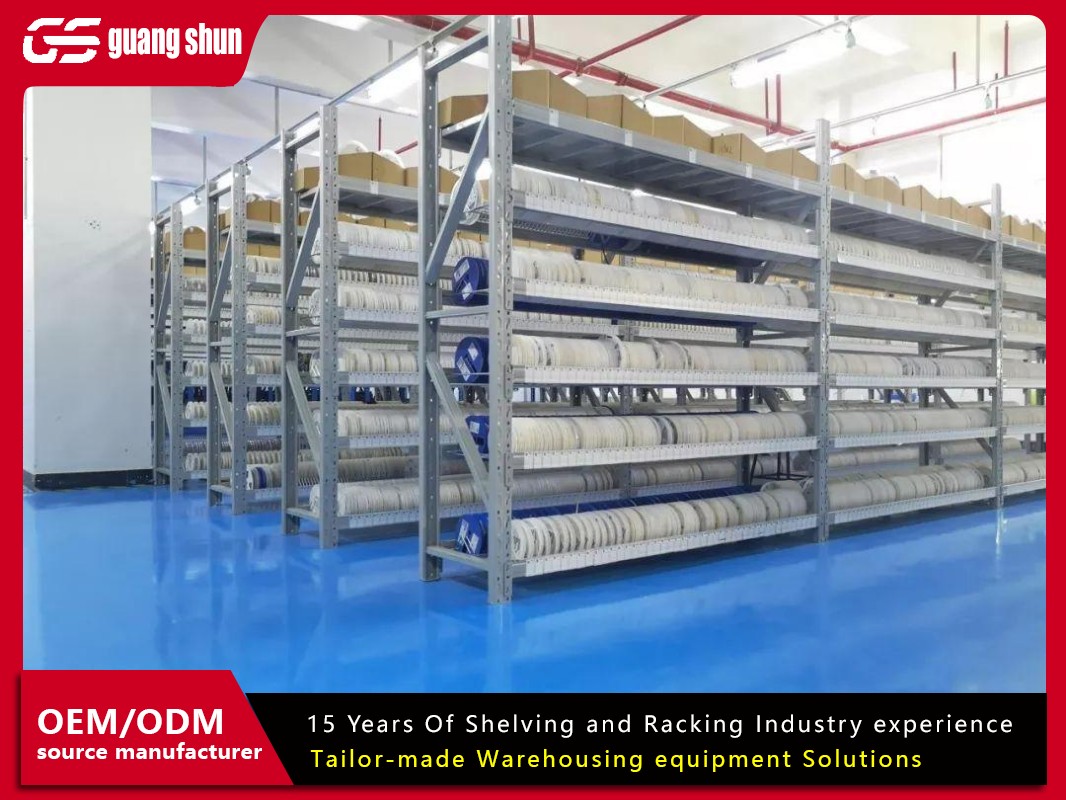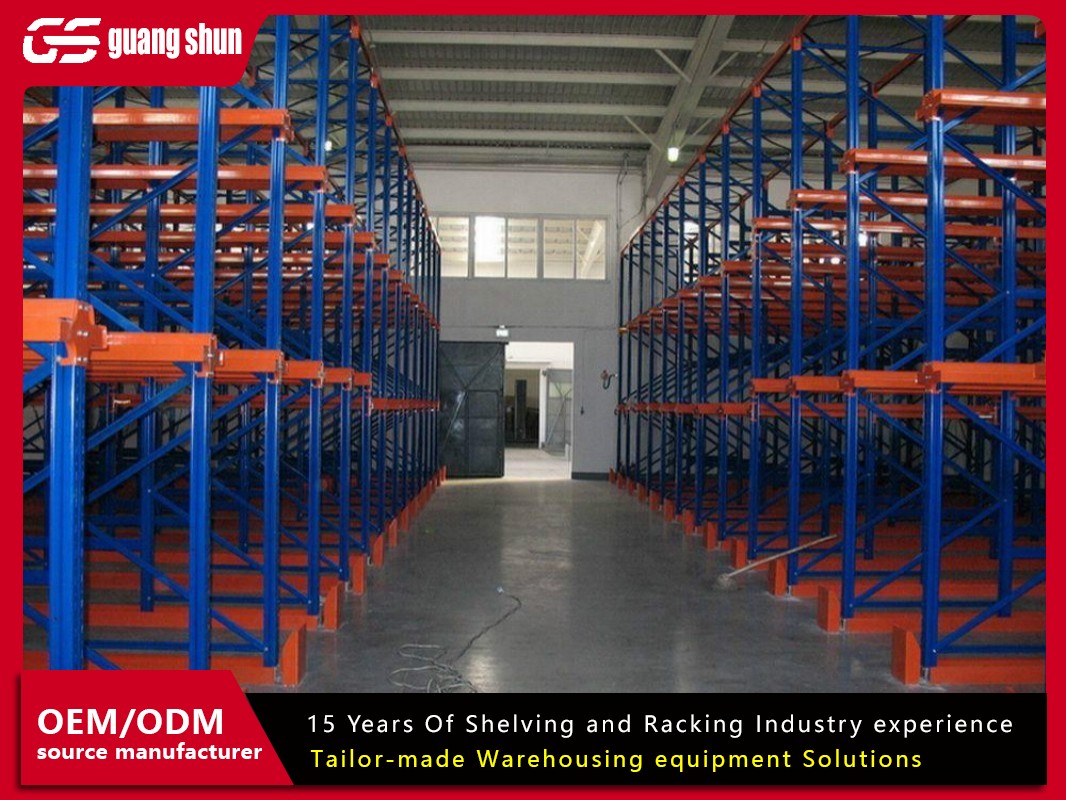In today's competitive logistics landscape, maximizing every square foot of warehouse space isn't just an advantage – it's a survival imperative. Skyrocketing real estate costs, burgeoning inventory demands, and the pressure for faster fulfillment all converge on one critical challenge: storage density. Enter Double Deep Racking, a powerful pallet racking configuration designed to squeeze significantly more inventory into your existing footprint. Unlike its single-deep counterpart, where each pallet faces the aisle directly, double deep racking stores pallets two-deep within each bay. This simple shift in design unlocks substantial space savings, primarily by drastically reducing the number of aisles required. This article delves deep into the world of double deep racking, exploring its mechanics, benefits, requirements, and considerations to help you determine if it's the right solution for your storage needs.

What is Double Deep Racking? The Core Concept Explained
At its heart, double deep racking is a structural storage system where pallet loads are stored two pallets deep within each storage lane. Picture a standard pallet racking bay. In a single-deep system, each position in that bay holds one pallet, accessible directly from the aisle. Double deep racking modifies this by extending the load beams deeper, creating space for two pallets per lane position – one positioned behind the other.
Accessing the rear pallet requires specialized material handling equipment, typically a reach truck equipped with a double deep reach mechanism or, less commonly, a counterbalanced forklift with a telescopic mast. The key visual difference lies in the aisle width. Double deep racking aisles are significantly narrower than those needed for single-deep systems using standard reach trucks, and wider than those used in very narrow aisle (VNA) systems. This configuration essentially sacrifices some direct accessibility for each pallet in exchange for packing more pallets into the same overall floor area. The fundamental principle driving the adoption of double deep racking is the substantial increase in storage density it offers compared to single-deep systems, often achieving 40-60% more pallet positions within the same warehouse footprint.
Slashing Aisle Space Requirements: The Density Advantage
The most compelling benefit of double deep racking, and the primary reason for its implementation, is the dramatic reduction in aisle space. Consider the math:
1.Aisle Width: Single-deep systems using standard reach trucks typically require aisles ranging from 11 to 13 feet (3.3 to 4 meters) wide to allow the truck to maneuver and access pallets. Double deep racking, utilizing specialized reach trucks with extended forks, operates effectively in aisles ranging from approximately 9.5 to 11 feet (2.9 to 3.4 meters) wide.
2.The Density Multiplier: While the aisle width reduction might seem modest (only 1.5-3 feet less), its impact is profound. Eliminating just a few feet per aisle across an entire warehouse translates into significantly more space available for actual storage racks. Since double deep racking places two pallets in the depth occupied by one pallet in a single-deep system, the storage density per aisle increases dramatically. Warehouses can often store 6-10 pallet positions deep per aisle in a double deep racking setup compared to 3-5 deep in a single-deep configuration within the same overall width (rack depth + aisle).
3.Real-World Impact: This efficiency directly combats rising real estate costs. Businesses can store more inventory without expanding their building footprint, postpone costly warehouse expansions, or operate effectively within a smaller, more affordable facility. The space savings achieved through double deep racking directly translate into lower per-pallet storage costs.
Essential Equipment: Forklifts Tailored for Double Deep
Implementing double deep racking isn't just about the racks; it necessitates a compatible fleet of material handling equipment (MHE). Standard reach trucks lack the necessary fork extension to safely and reliably retrieve the second pallet in a lane. Here's what's required:
1.Double Reach Trucks: These are the most common solution. They feature a specialized pantograph mechanism that allows the forks to extend significantly further forward than a standard reach truck – typically enough to access the second pallet position while the truck remains within the narrower aisle. These trucks are highly maneuverable and designed specifically for the aisle widths used in double deep racking.
2.Telescopic Forklifts: Sometimes called "Combi" trucks, these versatile machines combine the functionality of a counterbalanced forklift with a telescoping mast that extends both vertically and horizontally. While they can operate in double deep racking aisles, they often require slightly wider aisles (closer to 11-12 feet) than dedicated double reach trucks and might be less maneuverable within the racking confines. They are a good option if you also need a truck for outdoor or loading dock use.
3.Critical Considerations:Fork Length & Capacity: Ensure the MHE has sufficient fork length to safely engage and retrieve the rear pallet without straining. Capacity must be rated for the loads stored at the higher levels.Maneuverability: Trucks must be agile enough to navigate the narrower aisles and position precisely for pallet access.Operator Skill: Operating in double deep racking environments requires skilled operators due to reduced visibility when retrieving rear pallets and the precision needed in narrower aisles. Comprehensive training is non-negotiable.Cost: Double reach trucks and telescopic forklifts represent a higher capital investment than standard reach trucks.

Operational Considerations: Throughput, Accessibility, and Stock Rotation
While the space savings of double deep racking are undeniable, it introduces specific operational dynamics that must be carefully managed:
1.Reduced Accessibility & Throughput Impact: The most significant trade-off is that the rear pallet in each lane is not directly accessible. Retrieving it requires the forklift to first remove the front pallet (if present), place it temporarily (either in the aisle or a designated spot – impacting flow), retrieve the rear pallet, and then potentially replace the front pallet. This "double-handling" inherently slows down the retrieval process for rear pallets compared to single-deep systems. Double deep racking is generally best suited for medium-to-low turnover inventory or bulk storage where frequent access to every individual pallet isn't required.
2.Criticality of Stock Rotation (FIFO vs. LIFO):LIFO (Last-In, First-Out): This is the natural flow for double deep racking. New pallets are placed in the front position, pushing the older pallet to the rear. When an order comes in, the newest pallet (front) is accessed first. This works well for non-perishable goods or items without strict expiration dates.FIFO (First-In, First-Out): Implementing FIFO in a double deep racking system is more complex and can significantly impact efficiency. It requires emptying an entire lane to access the oldest pallet at the rear. If FIFO is mandatory (e.g., for perishables, pharmaceuticals, or items with strict lot control), double deep racking may not be the optimal solution, or lanes must be dedicated to specific lots/products with careful management.
3.Warehouse Management System (WMS) Integration: A robust WMS is crucial for maximizing efficiency in a double deep racking environment. It must:Accurately track the location of every pallet (front or rear position).Optimize put-away to minimize future access issues (e.g., grouping similar SKUs/lots in the same lane).Intelligently sequence retrieval tasks to minimize unnecessary shuffling of front pallets.Enforce stock rotation rules (LIFO/FIFO) effectively.
Layout and Design: Optimizing the Double Deep Configuration
Designing an efficient double deep racking layout requires careful planning beyond just the racks and aisles:
1.Aisle Width Precision: Determining the exact aisle width is critical. It depends on:The specific double deep racking truck model being used (including its turning radius and fork extension length).The size and weight of the pallets being stored.The height of the racking system.Building features like column spacing and floor flatness. Consultation with both the racking supplier and the forklift supplier is essential to get this right.
2.Cross Aisles: Incorporating periodic cross aisles is vital for overall warehouse flow. They allow forklifts to move between storage aisles without traveling all the way to the end. The frequency of cross aisles impacts both travel time and storage density – more cross aisles improve flow but slightly reduce overall density. Finding the right balance is key.
3.Picking Considerations: If order picking is done directly from the double deep racking, it typically happens only from the front pallet position for efficiency. This makes double deep racking less ideal for high-volume, multi-SKU piece picking operations. It's better suited for full-pallet retrieval or case picking operations where picks can be consolidated elsewhere. Some facilities use a combination of double deep racking for bulk storage and separate, more accessible zones (like carton flow or single-deep) for active picking.
4.Safety First: Design must incorporate adequate clearances, sturdy rack protectors (upright guards, column protectors), clear signage, and designated areas for temporary pallet placement during double handling. Floor markings for aisles and pedestrian zones are essential.
Double Deep vs. Single Deep: Choosing the Right Fit
Understanding the key differences helps determine the best solution:
•Storage Density: Double deep racking wins significantly, offering 40-60% more pallet positions than single-deep in the same space.
•Accessibility & Throughput: Single-deep racking wins. Every pallet is directly accessible, leading to faster load/unload times and higher potential throughput. Ideal for high-turnover SKUs or FIFO-critical inventory.
•Equipment Cost: Double deep racking typically requires more expensive specialized forklifts (double reach or telescopic) compared to standard reach trucks used in single-deep.
•Operating Cost: While MHE costs are higher, double deep racking can offer lower per-pallet storage costs due to density. However, potential double-handling can increase labor time/cost per pallet movement.
•Flexibility: Single-deep offers more flexibility for storing pallets of different sizes or SKUs within the same bay. Double deep racking lanes usually store identical SKUs/lots to avoid access conflicts.
•Best Fit:Double Deep: Medium-to-low turnover inventory, bulk storage, LIFO compatible goods, space-constrained facilities, cost-per-pallet minimization priority.Single Deep: High-turnover SKUs, strict FIFO requirements, high-throughput operations, diverse pallet sizes/SKUs per bay, where accessibility trumps maximum density.
Implementation and Cost Considerations: Planning for Success
Transitioning to or installing a double deep racking system requires strategic planning:
1.Thorough Analysis: Conduct a detailed SKU velocity analysis (ABC analysis). How much of your inventory has turnover rates suitable for double deep racking? What percentage requires high accessibility?
2.Feasibility Study: Partner with experienced racking suppliers and MHE vendors. Evaluate your current and projected pallet volumes, dimensions, and weights. Assess building constraints (clear height, column spacing, floor load capacity, door locations).
3.Phased Approach: Consider implementing double deep racking in specific zones of your warehouse dedicated to slower-moving inventory, rather than a complete overhaul. This mitigates risk.
4.Cost Components:Racking: Double deep racking itself may have a slightly higher material cost per bay than single-deep due to longer beams, but the density means you need fewer bays overall for the same pallet count, potentially offsetting this.Forklifts: The major cost difference. Specialized double reach or telescopic trucks are a significant investment.Installation: Similar to other racking systems, dependent on size and complexity.WMS/Software: Potential upgrades or configuration for optimized double deep management.Training: Critical investment for forklift operators and warehouse management personnel.
5.ROI Calculation: The justification lies in the space savings. Calculate the value of the additional pallet positions gained versus the cost of the system (racks + MHE). Factor in avoided costs of expansion, relocation, or external storage. Compare the per-pallet storage cost under double deep racking vs. alternatives.
Conclusion: Is Double Deep Racking Your Density Solution?
Double deep racking presents a powerful solution for warehouses battling space constraints and seeking to maximize storage density without a costly expansion. By reducing aisle widths and storing pallets two deep, it unlocks significant floor space for additional inventory. However, this efficiency comes with trade-offs: reduced accessibility for rear pallets, the necessity for specialized forklifts, and operational complexities around stock rotation and throughput.
Its ideal application lies in storing medium-to-low turnover inventory under LIFO principles, where the space savings dramatically outweigh the slower access times. Careful planning, involving detailed SKU analysis, precise layout design with the right equipment, seamless WMS integration, and comprehensive operator training, is paramount for successful implementation. When these factors align, double deep racking transforms from a mere storage configuration into a strategic asset, driving down per-pallet costs and empowering warehouses to do more within their existing four walls. Evaluate your inventory profile, throughput needs, and operational goals to determine if double deep racking is the key to unlocking your warehouse's full potential.







